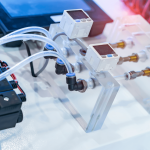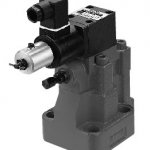Signs You Need to Upgrade Your Transfer Pump for Better Efficiency
Upgrading your transfer pump allows you to keep things running, optimize performance, reduce downtime, and save money. If you’ve ever sighed at slow material flow or been frustrated by inconsistent suction, you may need an upgrade. Keep reading to explore the top indicators it’s time for an upgrade with Air & Hydraulic Equipment.
1. Inconsistent Flow or Suction from Your Transfer Pump
When your transfer pump fails to maintain steady suction, small clogs or worn seals could be to blame. Worse, inconsistent material movement can lead to processing headaches, quality issues, or even line stoppages.
Inspect hoses for blockages and check seals for wear. If inefficiency persists, it’s likely time for a new pump.
2. Rising Energy Bills or Compressed Air Usage
Transfer pumps driven by compressed air can start sucking more air as wear sets in. That means your energy costs slowly, but steadily, climbing.
Escalating utility bills cut into your bottom line over time. Compare your current air consumption against expected specs, and reach out if you notice a spike!
3. Frequent Maintenance & Unplanned Downtime
If your pump is in for repairs more often than it’s running, that’s a red flag. Sand, powders, or small parts can erode internal surfaces or clog components. Labor hours, spare parts, and unscheduled production pauses add up fast.
Keep a log of your pump’s downtime. If maintenance tends to be weekly or more, it’s upgrade-o’clock.
4. Your Transfer Pump Is Old–Style & Inefficient
Older transfer pumps may not offer streamlined flow paths, effective vacuum levels, or modular components. Newer units feature straight-through, clog-resistant designs, quick-connect fittings, and minimal dead space
If your transfer pump is over 8–10 years old and was state‑of‑the‑art back then, replacing it with a modern design can nearly halve your air usage and drastically reduce jams.
5. Noisy Operation & No Silence in Sight
Excessive noise often signals inefficiency. Leaky fittings, worn silencers, or outdated designs can turn your transfer pump into an industrial roarer. High noise means OSHA risks, lower worker morale, and more safety gear hassles.
Take a sound level reading today, and let us help quiet things down.
6. You’re Expanding or Changing Production Needs
Maybe throughput needs have increased, or you’re now handling lighter, powdery, or sticky materials. The old transfer pump might just not cut it. Running under capacity slows everything else down—throughput stalls, bottlenecks form, and deadlines slide.
Planning scale-up or material change? Get our input early to optimize pump selection.
Air & Hydraulic Equipment’s Transfer Pump Solutions
Air & Hydraulic Equipment is proud to represent the IMI Norgren NDF‑series, ideal for efficient material transfer. Our team is ready to help you size and spec the perfect fit. Here are some things to consider:
How to Choose the Right Replacement Transfer Pump
- Match your bore: choose a pump with an internal diameter slightly bigger than your largest conveyed item to prevent clogging.
- Calculate compressed air needs: use pressure and flow data to model operating costs.
- Account for material type and distance: heavier powders or long runs may require a booster or larger unit.
- Check maintenance ease: quick-connect fittings, stainless bodies, and modular parts help reduce downtime and costs.
Time to Upgrade Your Transfer Pump?
- Irregular flow or suction
- Energy/air usage climbing inexplicably
- Frequent repairs or unplanned stops
- Pump age over a decade
- Excessive noise
- New or expanded material needs
Contact us at Air & Hydraulic Equipment today for a custom quote or spec advice, and make your next transfer pump upgrade a smart one!










